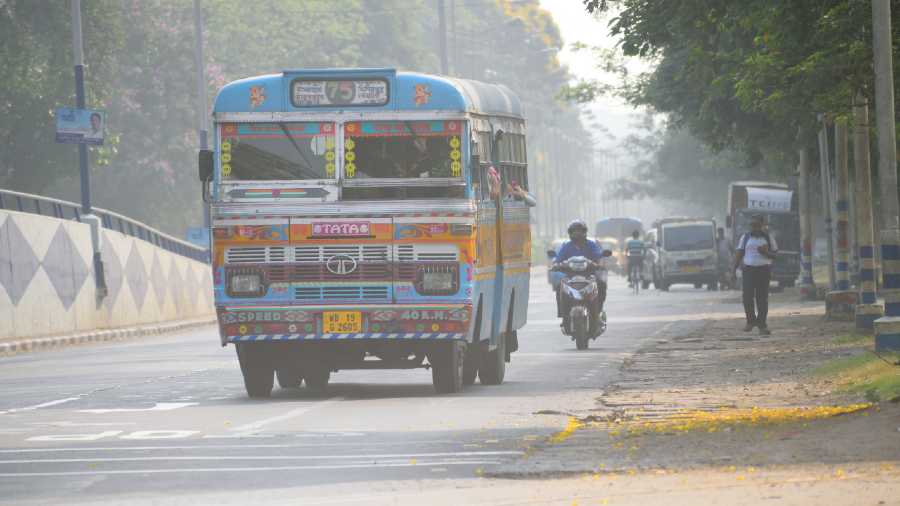Kolkata is fifth among metros in gross mortality caused by PM2.5 pollutants, according to a recent global report.
Delhi is the second among the 103 most populous cities that were included in the report. The time period of the study was 2010 to 2019.
In India, Mumbai registered the highest rise in PM2.5-linked deaths among the metros.
The study, Air Quality and Health in Cities, was conducted by the US-based Health Effects Institute (HEI) and the findings were released recently.
“South Asian cities are extremely vulnerable to PM2.5 pollution exposure and related mortality. A multi-sectoral strategy is required to counter the trend,” Pallavi Pant, a senior HEI scientist who was associated with the study, said.
WHAT IS PM2.5?
PM2.5 is the ultrafine particulate that can invade the interiors of the lungs, often taking with it other toxic chemicals. It is capable of triggering a wide range of diseases that cause a huge number of deaths directly and indirectly.
LOOK AT ‘TOP’ FIVE
In decadal gross mortality linked to PM2.5, Jakarta in Indonesia leads the pack with around 3 lakh deaths. The next four spots are occupied by Indian and Chinese cities. Delhi is second, Shanghai and Beijing occupy the third and fourth positions, respectively, followed by Kolkata.
Kolkata, which was found to have the second-highest exposure to PM2.5 after Delhi, recorded over 2 lakh PM2.5-linked deaths. The corresponding number for Delhi was nearly 2.65 lakh.
Bengaluru, Chennai and Hyderabad were found to have much lower PM2.5-linked gross mortality compared with Delhi, Kolkata and Mumbai.
DISEASES ‘ASSOCIATED’
“Deaths from six diseases were included to estimate the burden on health associated with PM2.5 and they are ischaemic heart disease, stroke, lower respiratory infections, lung cancer, Type 2 diabetes, and chronic obstructive pulmonary disease (COPD),” says the report.
The West Bengal Pollution Control Board questioned the veracity of both PM2.5 pollution exposure level as well as the related mortality data for Kolkata cited by the report.
“How can they directly link all the deaths under these categories with PM2.5 exposure?” asked a senior pollution control board official.
“The mortality figure for Kolkata seems to be overestimated,” said a senior city scientist working with air pollution.
Pant defended the report, saying it was completely science-driven. “We have reached the mortality numbers under various categories based on established attribution values and that applies to all the cities, including Kolkata,” said Pant.
MUMBAI & DELHI SCENARIO
According to the report, the rise in PM2.5-linked mortality in Mumbai was about 46 per cent — 10,990 estimated deaths in 2010 to 16,020 in 2019. In South Asia, Dhaka recorded the highest rate: 56 per cent rise from 14,190 in 2010 to 22,090 in 2019.
The corresponding percentage for Delhi was 39. Kolkata fared much better with the rise of PM2.5-linked death through the decade measured at 23 per cent, which is half of Mumbai rate.
MUMBAI WOES
“Mumbai climbing up the pollution-mortality ladder may seem surprising but the long-time pollution figures also vindicate the trend. The HEI report shows that Mumbai’s annual PM2.5 exposure level has increased consistently over the last decade. The city recorded one of the highest rises PM2.5 exposure in India at 24 per cent,” explained an environmentalist.
